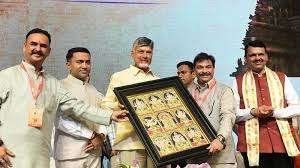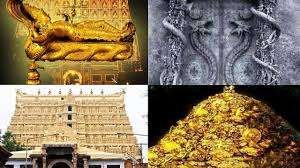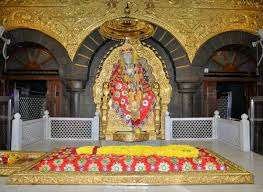
India’s Temple Economy: A ₹6 Lakh Crore Powerhouse Transforming the Nation
Temple Economy in India stands as a massive financial and cultural force, valued at approximately ₹6 lakh crore annually. Andhra Pradesh Chief Minister N. Chandrababu Naidu recently highlighted its significance, calling it India’s largest economic activity. This powerful sector fuels employment, tourism, and commerce, blending tradition with modern governance.

The Role of Temples in India’s Economy
Temples in India serve as spiritual hubs and economic engines. With millions of devotees visiting daily, temples generate enormous revenue through donations, tourism, and religious offerings. The economic cycle revolves around:
- Donations and Offerings: Devotees donate cash, gold, and valuable items, making temple trusts among the wealthiest institutions.
- Employment Generation: Temples provide jobs for priests, flower vendors, shopkeepers, artisans, security personnel, and tourism workers.
- Tourism Industry Boost: Popular temples like Tirumala Tirupati Devasthanams, Kashi Vishwanath, and Vaishno Devi attract millions of visitors, contributing to local economies.
- Real Estate and Infrastructure Development: The demand for hotels, transportation, and eateries grows around major temples, spurring urban development.

How the Temple Economy Works
The temple ecosystem is vast and interconnected. It involves:
1. Donations & Gold Reserves
Major temples accumulate massive wealth from devotee donations. For example:
- Tirumala Tirupati Devasthanams (TTD) manages assets worth thousands of crores.
- Padmanabhaswamy Temple holds one of the world’s richest gold reserves.
- Shirdi Sai Baba Temple receives crores in annual offerings.

2. Pilgrimage Tourism and Local Businesses
Temple visits drive demand for:
- Hotels and lodges
- Transport services (flights, trains, buses)
- Restaurants and food vendors
- Religious souvenir shops and handicrafts
3. Cultural and Artisanal Industry
Temples sustain traditional crafts and skills such as:
- Idol-making and temple architecture
- Handloom and textile production (like Banarasi sarees)
- Brassware, jewelry, and sacred items

Modernization of Temple Administration
Chandrababu Naidu emphasized the need for technology-driven temple governance, integrating:
- AI-powered surveillance for security
- RFID-based crowd management for smooth pilgrim flow
- Digital donations & online services for convenience
- Self-sustaining ecosystem models for effective fund utilization
Government Initiatives & Future Plans
The Andhra Pradesh government plans to construct Lord Venkateswara temples in every Indian state capital and key global cities. This initiative will:
- Strengthen religious tourism
- Unite the global Indian diaspora
- Generate employment in the religious and tourism sectors
The Global Impact of India’s Temple Economy
Indian temples influence global religious tourism. Devotees from across the world visit sacred sites, boosting:
- Foreign exchange earnings
- International spiritual tourism
- Cultural diplomacy
Challenges and the Road Ahead
Despite its growth, the temple economy faces:
- Fund mismanagement in certain temple trusts
- Overcrowding issues in popular pilgrimage sites
- Infrastructure gaps requiring modern development
Conclusion
Temple Economy in India, valued at ₹6 lakh crore, is a powerhouse fueling jobs, tourism, and economic development. With modernization and transparent governance, temples will continue to strengthen India’s cultural and economic landscape. As this sector evolves, it promises to shape the future of spiritual tourism and sustainable economic growth.
Temple Economy in India
Temple Economy in India






Add comment